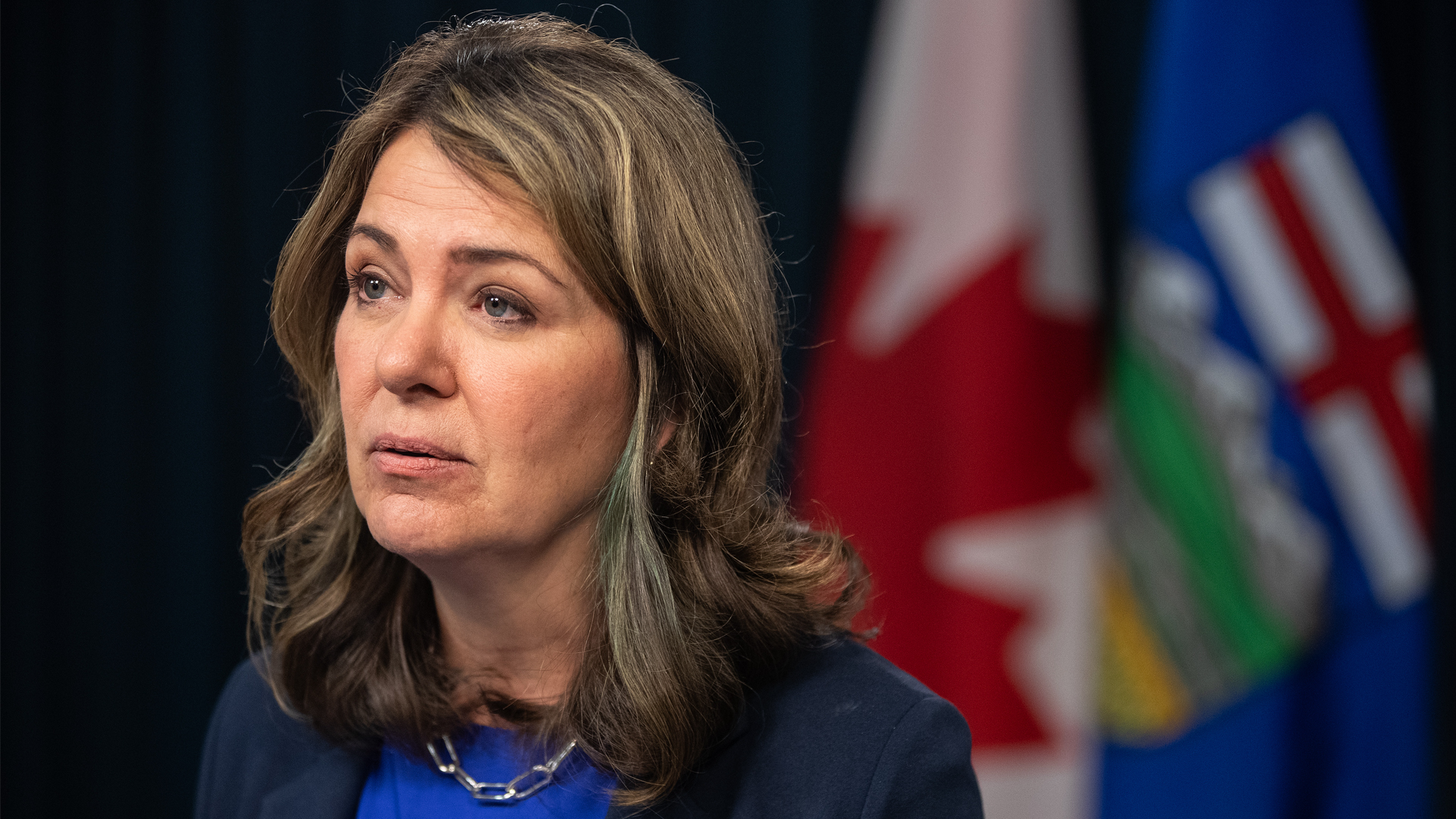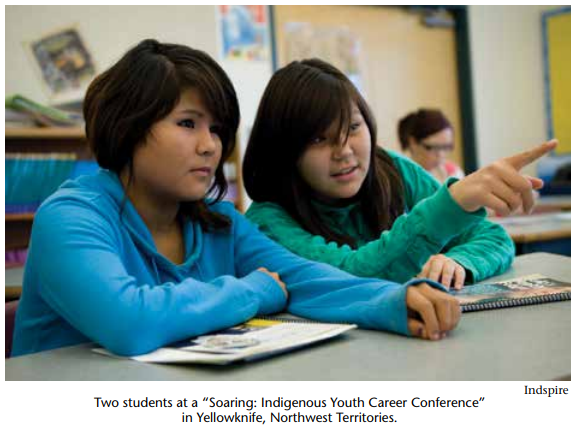
I have often been struck by the wisdom of young children. I asked my five-year-old daughter and my eight-year-old son what will matter to them when they are 13 and 16 years old, respectively, in 2020. Simply enough, my daughter responded that she “wanted to be able to go to school with her friends.”
My hope for 2020 is that First Nations youth living only a few kilometres away and who are the same age as my children will have equal access to educational opportunities for a bright future, while benefiting from the successful transmission of First Nations languages, cultures and perspectives.
To realize this hope, serious attention is needed to address the widening gap between First Nations education levels compared with those of the general Canadian population. Education for Aboriginal youth is vital, because health studies show there is a close relationship among education levels, family income and health outcomes.
Addressing the gap in education levels does require committed leadership and collaboration by federal, provincial and First Nations jurisdictions. However, there is an urgent moral imperative to break down the current jurisdictional obstacles to Aboriginal education in order to improve the social and economic well-being of families living in reserve communities, especially those in northern, isolated communities.
According to the 2006 census, the national employment rate for First Nations on-reserve was 51.8 percent in 2005 compared with the non-Aboriginal employment rate of 81.5 percent. The on-reserve median adult annual income was less than half that among non-Aboriginal Canadians.
In 2000, the auditor general of Canada, in an audit of Aboriginal Affairs and Northern Development Canada (AANDC)elementary and secondary education programs, reported a 28 percent gap between the high school completion rate on reserves and that in the Canadian population as a whole. A followup audit in 2004 found that the gap had narrowed slightly, but the pace of improvement had slowed. Most recently, the 2011 Auditor General’s Status Report found that between 2001 and 2006 the gap had widened to 36 percent.
In striking contrast to this vivid picture on reserves, the efforts pursued in each province and territory to improve elementary, secondary and post-secondary education over the past few years seem to be paying off. For example, Ontario has been cited in recent years, notably by McKinsey and the Organisation for Economic Co-operation and Development (OECD), as a world leader in elementary and secondary education. This is in large thanks to its strategy of “pressure and support” at the provincial, school board and school levels; its targeted efforts to build the “will and skill” of educators; the buy-in of education partners; and substantial increases in provincial investments. These coordinated strategies focused on three key goals: improving student achievement, closing gaps in student outcomes and sustaining confidence in publicly funded education.
Recent statistics from the Programme for International Student Assessment (PISA) tell us that
- Ontario was among the top-achieving jurisdictions of the 75 that participated in the 2009 PISA reading assessment;
- Of Ontario students, 92 percent met or exceeded PISA’s achievement benchmark at which students begin to demonstrate the kind of knowledge and skills needed to use reading competencies effectively. This compares to the 91 percent of students in Alberta and British Columbia, the 90 percent of Canadian students and the 81 percent of students across the OECD that achieved this benchmark;
- Of the 75 jurisdictions participating in the 2009 PISA math assessment, seven had results that were significantly higher (statistically) than Ontario’s;
- Of the 75 jurisdictions participating in the 2009 PISA science assessment, five had results that were significantly higher (statistically) than Ontario’s.
- Ontario and Canada as a whole also have smaller gaps relative to other countries in student achievement and participation rates when considering ethnicity or socio-economic status.
For all of these positive trends and results, one negative trend stands out in education: the significant gap between Aboriginal and non-Aboriginal youth in Canada on key indicators related to education. This is unacceptable and can no longer be tolerated, on moral grounds, but also because of the increasing leadership Aboriginal peoples are assuming in the socio-economic decisions affecting their communities.
In Ontario there is a relatively recent example of collaboration between the federal and Ontario governments, despite jurisdictional issues. The establishment of full elementary and secondary education governance by and for linguistic minorities in Canada is an outstanding example of a situation where the winning conditions were put in place by the respective governments, albeit sometimes after they were forced to do so by the courts, with resounding success. In 1998 Ontario created French-language school boards for its official linguistic minority. Surprisingly, the province was the last Canadian jurisdiction to do so. Many of the 12 new entities were doomed to fail, according to some observers. Given the opportunity to govern their schools, and provided with a level playing field with the public and Catholic school systems of the linguistic majority with regard to funding, Franco-Ontarians took the matter in their own hands. They worked together to share resources and back-office functions such as banking arrangements, an information technology network, an enrolment management system and an enterprise resource planning system. They also pooled their resources for educators’ professional development and the development of e-learning resources.
At the outset, the new entities relied on the expertise of administrators who had developed versatile experience as supervisory officers in French-language sections of English-language school boards. The newly created French-language boards struck a balance between the need to govern themselves “by and for francophones” and the need to document the gaps that needed to be addressed by the province, while working closely with their peers from other systems and the province to advance publicly funded education in Ontario and learn from colleagues.
Before 1998, French-language students were underperforming on provincial assessments compared with English-language students. In 2011, French-language students were outperforming English-language students on average by 10 percentage points on provincial grade 3 and 6 assessments in reading, writing and mathematics.
If Ontario, with federal support, was capable of facilitating such a resounding success with the creation of 12 new French-language school boards serving about 90,000 students across the whole province, surely Ottawa, Queen’s Park and First Nations can do the same for half a dozen new education entities on-reserve that would serve about 16,000 students across the whole province. The same spirit of urgency applied to addressing the gap in education between those living on-reserve and Ontario students off-reserve can only mean a comparable improvement in on-reserve education.
According to the 2010 Report of the Far North Science Advisory Panel, the far north of Ontario is an area where 24,000 predominantly Aboriginal people live in 34 communities spread over a territory roughly the size of Spain. Over 50 percent of the population is under 16 years of age. The on-reserve communities in the far north are sparsely populated, isolated and difficult to access. Currently, many students leave school during elementary school.
The discovery of large chromite deposits in this geographical area has naturally drawn the attention of international mining companies and governments. Mining companies believe they are ready to go; however Ontario’s Far North Act stipulates that Aboriginal peoples must have a significant leadership role in “the development, implementation and coordination of land use planning” within their traditional territories.
The way forward therefore will require significant negotiation among First Nations, mining companies and governments, as well as partnership agreements setting out detailed action plans. Part of the action planning needs to address the current skills challenges in local Aboriginal communities by ensuring thought and attention are paid to the training and education of youth at all levels.
For action planning to be successful, it is crucial to encourage the youth in these communities to continue with their education by giving them hope, as well as a vision of the various leadership roles they can play in shaping what happens in their communities and traditional territories. Education is key in preparing the next generations of community leaders with the robust knowledge required to lead planning and decision-making related to their communities and territories.
Improved education opportunities for Aboriginal youth in Ontario’s far North require a level playing field and a high standard of education with qualified educators, fair education funding and accredited curriculum comparable to students learning off-reserve. This, in turn, can provide the Far North with the necessary expertise to take up leadership and stewardship roles in Aboriginal communities, ensuring that they and future generations will gain from economic and social development that intentionally balances economic benefits with traditional knowledge and lifestyles, and with informed sustainable mining and environmental practices.
In my experience, the implementation of successful, sustainable change is contingent on five conditions for participants: a clear vision; the skills required to get the job done; incentives that foster the right behaviours and attitudes; an appropriate level of resources; and a thorough action plan. The absence of only one of these five winning conditions will jeopardize the successful achievement of change. The absence of vision leads to confusion. The absence of skills leads to anxiety. The absence of incentives leads to only gradual change. The absence of resources leads to frustration and feelings of hopelessness. The absence of an action plan leads to false starts or inertia.
In the case of Aboriginal education, I would add a sixth condition: there needs to be full support within the system that fosters the development of change, to ensure the program is successful. This means addressing long-standing stereotyped beliefs about Aboriginal peoples.
Earlier this year the Commission on the Reform of Ontario’s Public Services put forward what some have qualified as bold recommendations regarding on-reserve education. These recommendations were made despite the reluctance by some senior government officials to have the province pay direct attention to this matter of so-called federal responsibility. Even after the release of the report, some government insiders were of the view that First Nations would never go for it.
The vision. What vision was articulated by the commission? First Nations need to govern their own schools, and by grouping these schools into a small number of educational entities it would be possible to ensure a critical mass of expertise (for example, half a dozen entities in Ontario would be sufficient to respect territorial considerations, but a small enough number for the entities to have critical mass). As well, the chief executive officers of these entities should be given the opportunity to meet regularly with their off-reserve peers at all regional and provincial gatherings. Equally important to systemic changes, the directors of education of Ontario’s 72 school boards would benefit from ongoing and regular interactions with their peers from on-reserve education entities.
The incentives. Government should propose multi-year strategic top-up funding agreements for participating First Nations that agree to administer the Ontario curriculum; to take part in the annual provincial assessments in reading, writing and math; and to have the school and “district” results publicly released, subject to privacy thresholds for smaller schools. The Ontario curriculum sets broad “expectations” and “learning contents,” which provide great flexibility for First Nations to foster indigenous perspectives and differentiated pedagogical methods in meeting such learning “expectations.”
The skills. Multi-year strategic top-up funding agreements should set out targets as to the proportion of teachers, principals and supervisory officers qualified in accordance with the standards of the Ontario College of Teachers. First Nations should have the opportunity to expand and govern themselves by establishing First Nations specific qualification programs for all educational roles, with regular accreditations from the Ontario College of Teachers, as for any other program service provider. Professional development opportunities with off-reserve educators would nonetheless be desirable.
The resources. The federal and provincial governments need to significantly increase the funding and level of coordination for First Nations education. In funding the proposed First Nations education entities, federal funding specifically allocated for education would be protected.
In 1996, the federal government established a floor of 2 percent annual increases in on-reserve education funding as a mean to shelter these programs from cuts being implemented in the rest of the federal government. Unfortunately, when federal program spending increases resumed in 1998-99, what was intended as a floor quickly became a ceiling of 2 percent of annual increases in education investments on-reserve by the federal government, a ceiling which surprisingly is reported to having essentially remained in place since, with a few exceptions. However, a review of Canada’s public accounts indicates that net ministerial expenditures of AANDC increased by 65.8 percent during the 16-year period between 1995-96 and 2011-12. Net ministerial expenditures for other federal departments increased by 60.8 percent during the same period.
Meanwhile, in Ontario, per-student education funding off-reserve increased by 55 percent during the nine-year period between 2002-03 and 2011-12. Ontario funding grew as enrolment shrank off-reserve. First Nations’ funding is reported to have been restricted, while enrolment continued to grow rapidly, making the problem worse. As Ontario has been taking the opportunity to build its human capital, First Nations students attending band-operated schools have been increasingly left behind.
Net ministerial expenditures at AANDC have increased by 41.6 percent between 2006 and 2011, compared with 25.1 percent in the rest of federal departments. Hopefully this trend will lead to more comparable funding between on-reserve and off-reserve education.
The action plan. The Commission on the Reform of Ontario’s Public Services called on Ontario to press Ottawa to implement its recommendations dealing with on-reserve schools. The commission even called on Ontario to supplement funding if the federal government does not close the gap soon in education funding between on-reserve and off-reserve students. While experts in intergovernmental relations will be quick to point out that the historical legal and political government-to-government relationship resides between Canada and individual First Nations, the absence of a robust framework for education of on-reserve First Nations students hinders efforts to improve education for these learners.
Addressing stereotyped beliefs. There is a long-standing history in Canada of systemically underestimating the collective resolve and capacity to accomplish great things in Aboriginal education. Commonly held views are that the status quo cannot be addressed because of jurisdictional considerations, that the federal government is unwilling to pay and that parties involved have competing priorities and/or a lack of capacity. These commonly held views are erroneous.
In 2006, Ontario was one of the few jurisdictions in Canada that did not have a dedicated Aboriginal education office with a critical mass of educators and policy analysts, even though its population includes 21 percent of Canada’s Aboriginal population. When the creation of such an office was announced, some observers predicted that the Ministry of Education could not recruit an adequate number of qualified educators. To the contrary, the Aboriginal Education Office recruited top talent.
Some observers feared that the chiefs of Ontario would slow down tangible progress in Aboriginal education off-reserve. To the contrary, in 2005 when given a choice between initiating consultations on a concise draft education policy framework informed by submissions received from the chiefs of Ontario in the past 20 years and aligned with the province’s three key education goals creating a committee to develop a protocol on future consultations, elders attending a tripartite working session expressed their support for consultations to begin right away. This led to the approval in 2006 of Ontario’s First Nation, Métis and Inuit Education Policy Framework.
Some predicted there would be significant challenges in securing local support for school boards to implement voluntary and confidential self-identification policies of Aboriginal students. To the contrary, six years later, 69 Ontario school boards have approved such policies, with the support of local First Nations and Métis communities.
Some predicted, when Ontario introduced self-funded programs for native studies and native languages in elementary and secondary schools off-reserve, that there would not be demand for them. To the contrary, enrolment in such courses soared by 150 percent in only four years from 5,538 in 2005-06 to 13,829 in 2009-10, creating a welcome “budget pressure” requiring significant increases in annual grants from $12 million to $40 million.
I am ready to roll up my sleeves to ensure the success of this much-needed transformation. I know many others are committed as well. All we need is a nod from Prime Minister Stephen Harper, Premier McGuinty of Ontario and First Nations leaders. Education leaders onand off-reserve have the skills to get going. All that are needed are the resources, incentives, action plan and readiness to work together meaningfully for the benefit of all students in Ontario.
In 2020, my daughter Amélie wants to go to school with her friends; so do the 64,322 First Nations, Inuit and Métis youth currently aged 14 years and under in Ontario, many of whom live in isolated communities in Ontario’s far north.
Photo: Shutterstock








